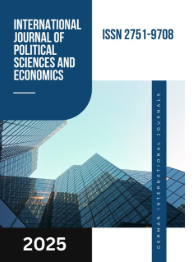THE HIDDEN POWER OF POSITIVE DISRUPTION: FROM COLLAPSE TO CREATION THROUGH THE AGES
DOI:
https://doi.org/10.55640/Keywords:
positive disruption, innovation through crisis, creative destruction, historical transformation, Black Death, societal collapse and renewal, constructive upheaval, modernize, World War II, Kantō earthquake, economic miracle, The United Nations, the Marshall Plan.Abstract
This paper examines how disruptive periods—whether social, economic, environmental — can act as catalysts for transformative change. Rather than viewing disruption solely as a force of destruction, the study reframes it as a necessary driver of systemic renewal and innovation. Drawing on historical case studies, philosophical insights, and contemporary analysis, it argues that disruption is an integral part of societal evolution. By analyzing patterns of collapse and regeneration, the paper highlights how breakdowns often give rise to creativity, resilience, and the reimagining of social and institutional structures. Ultimately, it offers a hopeful perspective on disruption, presenting it as an opportunity for growth rather than an endpoint.
References
1.BBC History. “World War Two: Summary, Combatants and Legacy.” https://www.bbc.co.uk/history/worldwars/wwtwo
2.United Nations. “History of the United Nations.” https://www.un.org/en/about-us/history-of-the-un
3.Contemporary History of Asian and African Countries, 20th Century: A Textbook for University Students. In 2 parts / Edited by A.M. Rodriguez. — Moscow: Humanitarian Publishing Center VLADOS, 2001. — Part 1: 1900–1945. — 368 pages. page 57.
Downloads
Published
Issue
Section
License

This work is licensed under a Creative Commons Attribution 4.0 International License.
Authors retain the copyright of their manuscripts, and all Open Access articles are disseminated under the terms of the Creative Commons Attribution License 4.0 (CC-BY), which licenses unrestricted use, distribution, and reproduction in any medium, provided that the original work is appropriately cited. The use of general descriptive names, trade names, trademarks, and so forth in this publication, even if not specifically identified, does not imply that these names are not protected by the relevant laws and regulations.







